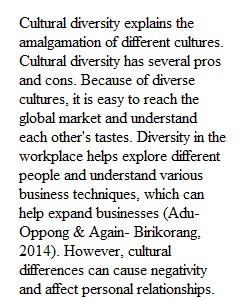


Q How much do you know about this person’s culture? Describe what you know and if you do not know much, itemize the areas where you have deficiencies. What biases, if any, do you have about this person’s culture? How will you navigate those biases to remain objective, supportive, and professional? Do you have any cultural anxiety and concern for building a strong working partnership? What measures can you take to cope with that anxiety and effectively communicate? Where can you go to get more context on social and behavioral aspects of the person’s culture, including possible language considerations? (NOTE: This may include specific online databases, books, or extended social and professional networks of people). Where does this culture fall in Hofstede’s cultural dimensions? How will Hofstede’s cultural dimension impact your communication approach? (Refer to work done on milestone 1 to help you answer this question.)
View Related Questions